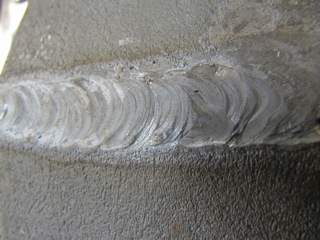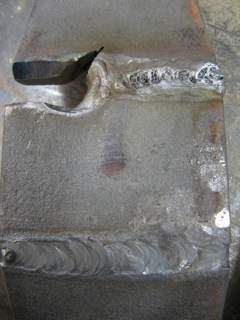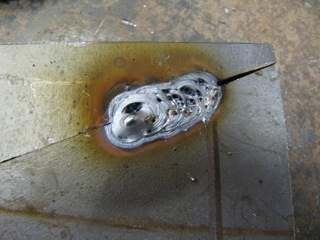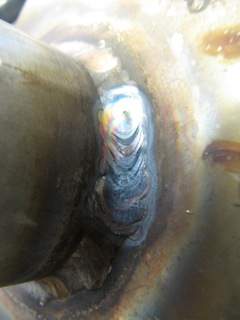Thanks for all the excellent advice and ideas! I am taking the suggestion to eliminate variables. I brought home a new bottle of 100% Argon courtesy of Airgas this afternoon. I switched tanks and purged gas at 30 cfh for 3 minutes, then tried a weld on one of the same metal pieces shown earlier. It started porous for a quarter inch then went smoothly for 2 inches. Same metal that didn't work earlier. Ah HA! Unfortunately, subsequent welds did not go as well but while I feel like there was some improvement (welds are maybe less porous than before) it's just not what it is supposed to be.
I also bought a new gas hose and torch head today. The old gas hose between the torch and the welder can be tested once I remove it but I don't know how to check the section of gas line between the tank and the welder. (On this Lincoln 275, the gas is routed to a giant twist-plug to get to the torch gas hose). Any suggestions on checking between bottle and twist-plug???? Nothing was moved or altered between the 'good weld' days and now. I am welding at 175-200 amps on 1/4". A short section of SS seemed to weld fine yesterday but need to double check that tomorrow (I would not expect that).
When the new torch head (WP-20) comes in, I'll try that but I see no obvious issues with the old one. The existing head does not have a valve nor will the new one. I use a wide #8 ceramic cup, a new gas lens collet, 1/8" 2% thoriated tungsten, I snug both ends, I let the tip out about 3/8" from the cup end, I sharpen the tungsten often (on the same grinder as before). I do get a lot of spatter with the porous welds but the tip doesn't melt or ball. I hear (and feel) a good amount of gas being emitted from the torch head and that sound changes with the flow setting.
I am interested in trying the filler rod mentioned earlier but I don't think my problem is related to filler because I cannot properly weld even a flat plate. When I use filler, I use ER70S-2 (except on SS of course). Water level was topped off with deionized. The steel I have problems with are a variety of new, rusty, cold-rolled, rebar, bar stock, angle with/without primer, oiled steel, dry, sanded, brushed w/SS, cleaned with acetone, and sand blasted. I have no idea where it was made but China is a good bet. I felt that I had a materials issue but I am getting enough advice to convince me that it may be a gas/leak issue. I need to be really sure the entire length of gas line does not leak so that is next, plus grizzzlys idea of grind/clean/weld on a flat.
I sincerely appreciate all the advice here, especially to grizzzly who got it started for me. I am new to this site and will return!






